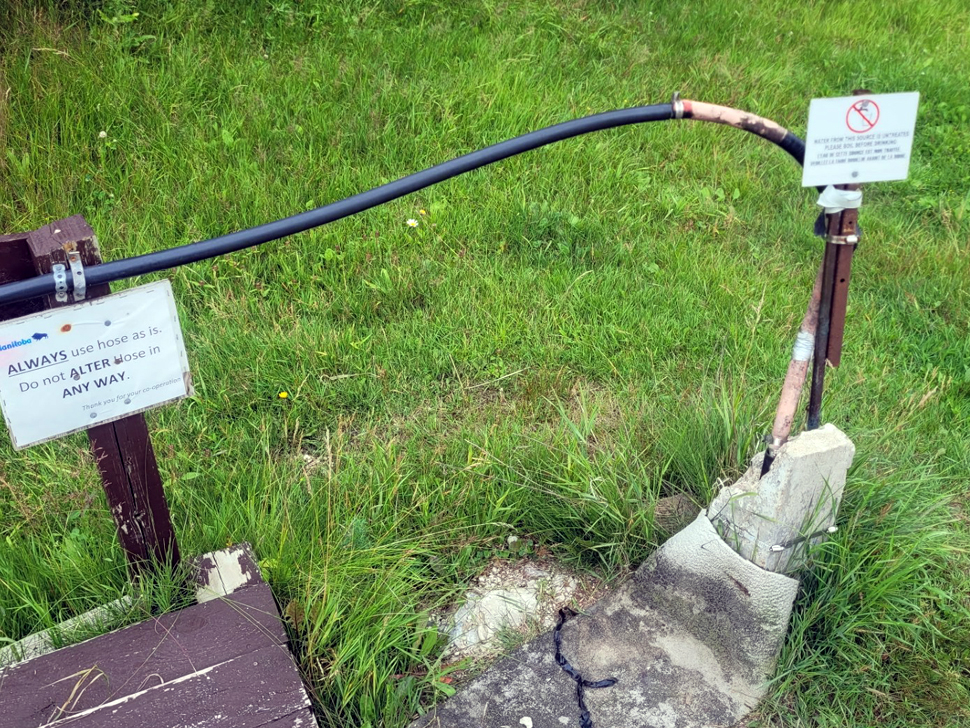Our province has provided clarification on the closure of two water systems in the southeast corner of Manitoba. Those closures happened last year in Woodridge and this year in Piney.
Earlier this week, La Verendrye MLA Konrad Narth noted that local residents are outraged by the closures and that he is working on getting the moves reversed. Narth says the closure in Piney happened without public consultation. He claims it was shut down due to the lack of a chlorination system, even though it is clearly marked that the water is not intended for human consumption.
Provincial officials read the story on SteinbachOnline.com and issued a statement. Our province says that protecting drinking water is a priority for Manitoba. To ensure that Manitobans have access to clean and safe drinking water, our province follows a comprehensive risk-based approach based on The Drinking Water Safety Act and risk-based policies that are informed by national health-based guidelines.
A provincial spokesperson says it is important to note that decisions to close water systems are made by the owners. In the case of the Woodridge bulk-fill and the Piney pail-fill, the decision to close was made by the system owners themselves, and not by order of the Office of Drinking Water.
The spokesperson says that in areas where municipalities do not operate a public water system, such as the Rural Municipality of Piney, residents rely on private wells or smaller, independently operated water systems. These systems may be owned and operated by businesses, organizations, or other entities that are not required to seek public input before making operational decisions that can impact residents' access to water.
The statement clarifies that the pail-fill at the Piney Fire Base is not a community well in that it is not owned and operated by the municipality. Water in the area is sourced from independent systems, each with different ownership and operational considerations. The decisions to shut down the bulk-fill station at the Woodridge Community Centre water system and the pail-fill station at the Piney Fire Base water system were made independently by their respective owner representatives. These were not decisions made by the RM of Piney or the Office of Drinking Water.
The spokesperson says that the two water systems closed for different reasons at the discretion of the system owners.
According to the statement, not all water systems are required to disinfect their water supply prior to providing water to the public. Bulk-fills must install secondary disinfections under a policy that links to a section of The Drinking Water Safety Regulation. The intent is to protect water users from bacteria that can otherwise form in the water. Pail-fills with a secure groundwater source, such as the one operated at the Piney Fire Base semi-public water system, are not required to disinfect under this policy or the legislation. Many other semi-public water systems operated throughout the RM of Piney are also not required to install disinfections. Disinfection requirements are based on several risk-factors such as size and type of water system, population served, source water, and bacteriological sampling history.
The spokesperson also noted that because the Woodridge Community Centre semi-public water system had a bulk-fill, but the Piney Fire Base semi-public water system operates a pail-fill, the two types of fill stations are treated differently under policy due to the volume of water dispersed, types of users, and the potential for long-term storage in cisterns. The system in Piney is a regulated semi-public water system which produces water intended for domestic purposes, including human consumption.
And finally, the statement indicates that despite the closure of the Woodridge Community Centre bulk-fill station, water for firefighting efforts remained accessible through multiple sources, including a holding tank supplied by the Woodridge Community Centre semi-public water system, Woodridge Fire Hall, and various surface water bodies such as ponds and rivers. While the closure did not eliminate the availability of water for emergency response, it did reduce the number of fill options and overall operational flexibility for firefighting crews.
No additional information was provided. And there was no indication as to whether or not these decisions to close could be reversed.
